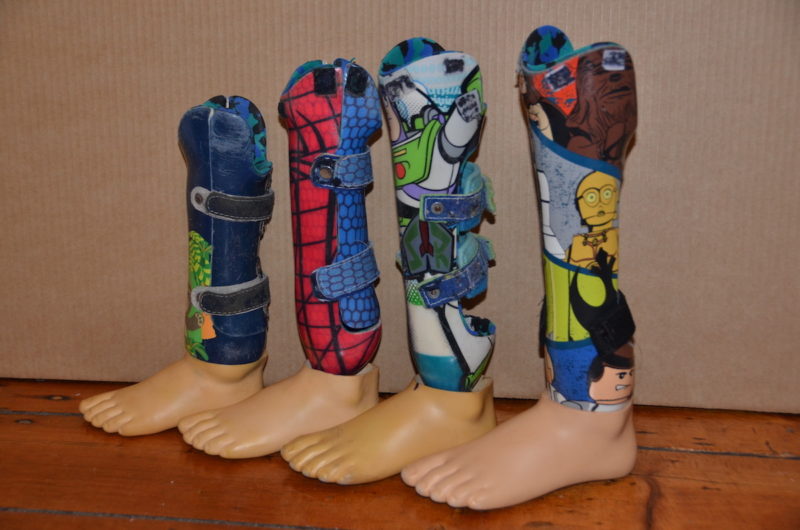Brace Services
Brace services encompass a wide range of healthcare provisions focused on the prescription, fitting, and management of medical braces (also known as orthoses or orthopaedic braces). These devices are externally applied to the body to support, stabilize, correct deformities, relieve pain, and improve the function of various musculoskeletal conditions.
Here's a breakdown of what silicone prosthetic services typically involve:
1. Types of Braces Offered:
Brace services typically provide a variety of braces for different body parts and conditions. These can include:
Spinal Braces:
Cervical Collars: Support and immobilize the neck after injury or surgery.
Thoracic Braces: Support the upper back and ribcage, often used for posture correction or after fractures.
Lumbar Braces: Support the lower back, used for pain relief, muscle strain, or post-surgery.
Scoliosis Braces: Custom-molded to correct spinal curvature.
Upper Limb Braces:
Shoulder Braces: Provide stability for dislocations, rotator cuff injuries, or post-surgery support.
Elbow Braces: Used for conditions like tennis elbow, golfer’s elbow, or after fractures.
Wrist Braces: Support for carpal tunnel syndrome, sprains, or tendonitis.
Hand and Finger Splints: Immobilize or support joints affected by arthritis, injury, or contractures.
Lower Limb Braces:
Knee Braces: Offer support for ligament injuries (ACL, MCL), arthritis, or post-operative care. Types range from sleeves to hinged braces and knee-ankle-foot orthoses (KAFOs).
Ankle Braces: Used for sprains, instability, or to prevent injuries, especially in sports.
Foot Orthoses (Insoles/Arch Supports): Support the arch, correct foot alignment, and alleviate pain from conditions like plantar fasciitis.
Ankle-Foot Orthoses (AFOs): Support both the ankle and foot, often used for drop foot or muscle weakness.
Hip Braces: Used post-hip surgery or for managing hip instability.
Fracture Braces/Casts: Provide rigid support for bone healing.
Prophylactic Braces: Used to prevent injuries during sports or other activities.
Dynamic Splints: Apply controlled force to improve joint range of motion.
Pediatric Braces: Specifically designed for children with various musculoskeletal conditions.
Dental Braces (Orthodontic Braces): Used to straighten teeth and correct jaw alignment. This is a specialized area within brace services, often provided by orthodontists. Types include metal, ceramic, lingual, and clear aligners (like Invisalign).
2. The Brace Service Process:
Assessment and Consultation: A healthcare professional (doctor, orthotist, physical therapist) will evaluate your condition, medical history, and specific needs to determine if a brace is appropriate.
Prescription: If a brace is needed, a prescription will be provided, specifying the type of brace, size, and any specific features required.
Measurement and Fitting: For many braces, especially custom or semi-custom ones, precise measurements of the affected body parts are taken to ensure a proper fit. The brace is then fitted by a trained professional who will instruct you on how to wear it correctly.
Adjustment and Modification: Braces may need adjustments to ensure comfort, proper alignment, and effectiveness. This might involve bending metal components, adjusting straps, or adding padding.
Education and Training: You will receive instructions on how to put on and take off the brace, how long to wear it each day, how to care for it, and any activities to avoid.
Follow-up Care: Regular follow-up appointments may be necessary to monitor your progress, make further adjustments to the brace, and ensure it is achieving the desired outcome.
Repair and Replacement: Brace services may also include repairs to damaged braces or guidance on when a replacement is needed.
3. What to Expect During a Brace Fitting (Specifically for Orthopaedic Braces):
Initial Evaluation: The professional will examine the area needing the brace and assess your range of motion, strength, and pain levels.
Measurement: They will take detailed measurements of the affected limb or body part using tape measures or other specialized tools
Trial Fitting (if applicable): If a pre-fabricated brace is being used, you will likely try on several sizes to find the best fit.
Customization (if needed): For custom-made braces, moulds or digital scans might be taken. Adjustments like bending, padding, or strap adjustments will be made to ensure a comfortable and effective fit.
Education: You’ll receive clear instructions on how to wear the brace, when to wear it, how to care for it, and any precautions to take. You’ll also have the opportunity to ask questions.
Gait Training (for lower limb braces): If the brace affects your walking, you might receive guidance on how to walk safely and effectively with the brace.
Visit us today at @30 Majekodunmi Crescent Utako Fct-Abuja Nigeria.
Call +2348088362696/09088362697
to receive the appropriate brace that is correctly fitted for your specific condition.
Call today for your free consultation!
Simply give us a call and book an appointment for yourself. We are here to help.
Walk into our Offices and let us take a closer look to suggest the best care you need.

